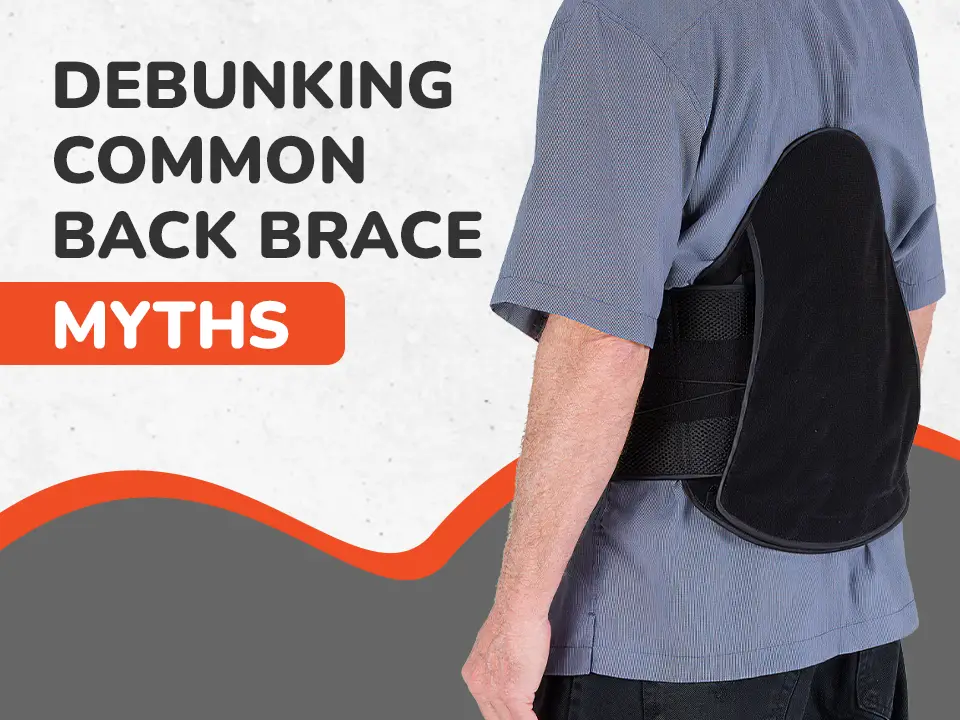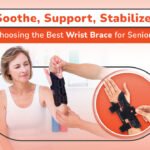In an age where information spreads at the speed of light, it’s easy for myths to gain traction. The realm of health and wellness is particularly rife with misconceptions. One product that has been surrounded by myths is the back brace. While some claim it’s a miracle solution for all back problems, others are swift to label it as a mere placebo or even harmful. In this article, we set the record straight by debunking some widespread myths surrounding back braces.
Myth 1: Back Braces Weaken Your Muscles
Truth
One widely held belief is that wearing a back brace regularly can diminish the strength of your muscles. To dispel this myth, we need to understand the fundamental purpose and correct usage of back braces.
- Temporary Support: Back braces are primarily designed to provide temporary support, especially during activities that strain the back or after injuries. While they offer support, they are not meant to replace the muscle’s function.
- Rehabilitation: Post-surgical or post-injury scenarios often see the prescription of back braces. In such cases, muscles might be weakened or compromised.
- Guided Usage: A critical factor in the effectiveness of back braces is their guided usage. When used under professional supervision, such as that of a physiotherapist, a back brace becomes an extension of the therapeutic process.
- Adherence to Recommendations: As with any medical tool or equipment, the benefits derived from a back brace depend largely on how it’s used. If one were to over-rely on the brace, it could lead to a dependency where the muscles become weaker over time due to lack of use.
- Protection Against Reinjury: Particularly for those recovering from an injury or surgery, a back brace acts as a safeguard against further strain or trauma. The support it offers can prevent movements that might lead to reinjury, allowing the muscles and tissues the necessary time and conditions to heal completely.
Myth 2: All Back Braces are the Same

Truth
The misconception that all back braces function identically and yield the same results has been around for a while. Let’s dive into the nuances and dispel this myth by understanding the specificities of different types of back braces.
- Rigid Braces: Typically made of hard materials, these braces are designed to limit movement in the spine, ensuring that the area remains stable, especially after surgery or serious injury. Their design is such that they provide the utmost support, making them an essential tool for those recovering from surgical procedures or major spinal complications.
- Soft Braces: Made primarily from elastic materials, soft braces restrict the forward motion of the spine, making them an ideal choice for conditions like muscle strains or to offer lumbar support. They offer a combination of flexibility and support, ensuring comfort while also aiding in the prevention of harmful movements that might exacerbate existing injuries.
- Posture Braces: Tailored to address postural issues, these braces work by pulling the shoulders back and aligning the spine to its natural position. They are especially beneficial for individuals who spend prolonged periods seated or engaged in activities that encourage slouching, serving as a reminder to maintain an upright posture.
- Specialized Braces: Depending on the unique condition or injury of the individual, there are braces crafted to provide specialized support. Whether it’s for conditions like scoliosis or specific types of injuries, these braces are optimized to offer targeted relief and support, ensuring that the individual receives the most appropriate care.
- Maternity Braces: Depending on the unique condition or injury of the individual, there are braces crafted to provide specialized support. Whether it’s for conditions like scoliosis or specific types of injuries, these braces are optimized to offer targeted relief and support, ensuring that the individual receives the most appropriate care.
Myth 3: If It’s Available Over-the-Counter, It’s Safe for Everyone
Truth
Just because something is easily available doesn’t mean it’s universally suitable:t
- Individual Needs: The human spine, with its intricate structure, is unique to each person. Factors such as its natural curvature, any existing medical conditions, and history of injuries play a significant role in what kind of support one might need.
- Medical Guidance: Relying solely on one’s judgment or general product recommendations can be misleading. Consulting with a medical professional not only ensures that the chosen brace aligns with one’s specific needs but also provides insights into its proper usage, optimizing the benefits while minimizing potential risks.
- Potential for Misuse: Braces are medical aids, and like any tool, they need proper handling. Without adequate knowledge or professional guidance, there’s a heightened risk of choosing a brace that doesn’t fit right — be it too tight, restricting blood flow, or too loose, rendering it ineffective.
- Duration of Use: The appropriate time span for wearing a back brace can vary widely depending on the individual’s condition and needs. Over-the-counter product instructions might offer general guidelines, but they can’t factor in personal nuances.
- Material and Quality Variances: Over-the-counter back braces come in various materials and quality levels. Not all materials may be suitable for everyone, especially those with sensitive skin or allergies.
Read More: Recovery and Support: Using a Back Brace After Surgery
Myth 4: Wearing a Back Brace is Painful
Truth
A properly fitted back brace should never be a source of pain:
- Comfort-Oriented Design: With user comfort at the forefront of their design, most back braces are crafted from materials that are gentle and soft against the skin. This is essential in minimizing any risk of irritation or discomfort, making the experience of wearing a brace as pleasant as possible.
- Adjustability: The innovation in brace design has led to features that allow users to adjust the fit according to their body contours. This adaptability is crucial, as it enables users to secure a snug yet comfortable fit, which is key in reaping the benefits of a brace without any accompanying pain.
- Incorrect Size Issues: One of the main culprits behind discomfort is using a brace of the incorrect size. This can be easily avoided by ensuring accurate measurements and consulting sizing charts or professionals, which will result in a better fit and a more comfortable experience.
- Adaptation Period: Any new addition to the body’s usual state requires an adaptation period, and back braces are no exception. Some users might initially experience a slight discomfort, but this is temporary.
- Proper Use and Positioning: A brace is effective only when used correctly. Incorrect positioning can lead to discomfort, emphasizing the importance of following usage instructions diligently.
Myth 5: Back Braces are Only for the Elderly or Athletes

Truth
It’s essential to understand that back braces cater to a wide range of needs and are not restricted by age or athletic involvement.
- Postural Issues: The modern era, characterized by prolonged sitting and screen time, has seen a surge in postural problems across various age groups. Even young adults, primarily due to sedentary work patterns and lifestyles, are increasingly facing postural issues, making the role of back braces even more significant.
- Everyday Activities: Our daily routines often involve tasks that, although seemingly simple, can put a strain on our backs. Whether lifting heavy shopping bags, engaging in household chores, or even gardening, a back brace can provide that added support, ensuring that these activities don’t take a toll on our backs.
- Preventive Measure: Prevention is always better than cure. Individuals who are aware of their predisposition to back problems, whether due to genetic reasons, previous injuries, or other factors, can use back braces as a preventive measure.
- Occupational Needs: Certain professions inherently have a higher risk of back strains. Jobs that involve extensive lifting, bending, or other strenuous physical activities can benefit significantly from the support a back brace offers.
- Temporary Relief: Not all back problems are chronic or severe. There are instances when one might experience temporary discomfort due to various reasons.
Back Braces Designed by Heal Medical Supply
Our back braces feature adjustable compression systems and are available for lower and mid-back support. If you’re not sure what product is right for you or if you’re eligible for insurance coverage, Heal Medical Supply will provide the guidance you need. We can even communicate with your doctor to determine the best back brace for you. Contact us today to check for insurance coverage.
Conclusion
Navigating the world of back health can be daunting, especially with the plethora of information, both accurate and misleading, available at our fingertips. Back braces, when used correctly and judiciously, can offer immense relief and support. However, it’s crucial to base your decisions on facts and professional advice rather than myths. A back brace is more than just a piece of fabric or a set of straps; it’s a tool designed with science and purpose. Understand its value, recognize its limitations, and let it serve you in the best way possible.






